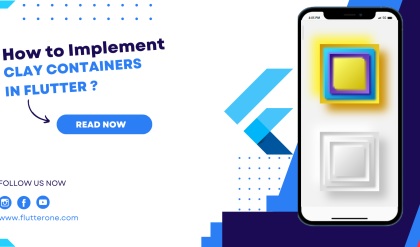RenderFlex and Text Overflow in Flutter
Flutter provides a powerful layout system that allows developers to create dynamic and responsive user interfaces. However, sometimes we encounter issues like RenderFlex and text overflow, which can affect the visual presentation of text elements. In this comprehensive guide, we will explore RenderFlex, understand the concept of text overflow, and delve into multiple examples and techniques to effectively handle and resolve text overflow issues in Flutter apps. By the end of this guide, you’ll be equipped with the knowledge to create visually appealing and well-structured text layouts in your Flutter applications.
Understanding RenderFlex and Text Overflow
What is RenderFlex?
RenderFlex is a flexible layout widget in Flutter that automatically adjusts the size of its child widgets based on available space. It enables dynamic layout behavior, ensuring that widgets can expand or shrink to fit the available space.
Text Overflow Issues
Text overflow occurs when the content of a text widget exceeds the available space, resulting in the text being clipped or truncated. This can lead to an undesirable user experience and make the text content unreadable or incomplete.
Resolving Text Overflow Issues
1. Text Wrapping
One common approach to handling text overflow is to enable text wrapping. By wrapping the text within the available space, you ensure that the entire content is displayed without being clipped or truncated.
Example:
Text(
'Lorem ipsum dolor sit amet, consectetur adipiscing elit.',
style: TextStyle(fontSize: 16),
softWrap: true,
)
In the above example, the softWrap property is set to true, allowing the text to wrap within the available space. This ensures that the entire text content is displayed without overflow.
2. Text Truncation
In situations where wrapping is not feasible or desired, you can truncate the text to a specified length and provide an ellipsis (…) to indicate that the text has been truncated.
Example:
Text(
'Lorem ipsum dolor sit amet, consectetur adipiscing elit.',
style: TextStyle(fontSize: 16),
overflow: TextOverflow.ellipsis,
maxLines: 1,
)
In the above example, the overflow property is set to TextOverflow.ellipsis, which truncates the text and adds an ellipsis at the end. The maxLines property is set to 1, limiting the text to a single line.
3. Expanding Parent Container
If the text overflow issue persists despite text wrapping or truncation, you may need to expand the parent container to accommodate the entire text content.
Example:
Container(
width: double.infinity, // Expand horizontally
child: Text(
'Lorem ipsum dolor sit amet, consectetur adipiscing elit.',
style: TextStyle(fontSize: 16),
),
)
In the above example, the Container widget is given a width of double.infinity, allowing it to expand horizontally to fit the text content. This ensures that the text is displayed in its entirety without overflow.
Conclusion
RenderFlex and text overflow are common challenges faced when dealing with text layouts in Flutter applications. By understanding RenderFlex and employing techniques like text wrapping, text truncation, and expanding parent containers, you can effectively handle and resolve text overflow issues. Remember to choose the appropriate approach based on your specific layout requirements. With these techniques in your toolkit, you’ll be able to create visually appealing and well






